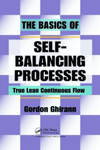Editorial: Too Much Productivity?
"Can we have too much productivity improvement?" At first glance, of course not; the goodness of productivity improvement is a given in U.S. manufacturing culture. We are driven by the "obvious" need to continuously improve productivity. But questions with "obvious answers" generally deserve a second look, if only because that which is "self-evident" sometimes isn't.
The question was posed by James L. Haskett, Baker Foundation Professor at Harvard University's Graduate School of Business, in his July 2003 column, What Do YOU Think? Productivity improvement is like safety, he said, in that we tend to think we can't have too much of it.
But, he asked, is America experiencing untimely increases in productivity? Given the economic challenges facing the world's economies, does productivity improvement at a time like this contribute to the downward price spiral so feared by economists from Alan Greenspan on down? Will it add to the ranks of the unemployed? Or does it provide the ultimate answer to foundering economies?
Opinion among respondents diverged widely. I encourage you to log on to http://hbswk.hbs.edu, where you will find the original column, 13 pages of thought-provoking responses and his summary. Haskett concluded that the questions remain. Does productivity improvement hurt more than it helps? Or will the old view that productivity is good have to be revisited?
It is noteworthy that politicians and bureaucrats, who tend to give manufacturing short shrift most of the time, are now rushing to pontificate on questions related to productivity and jobs. Most of this, however, is nothing more than public posturing during an election year. Most of them have never worked at a real job, and in general they don't truly comprehend manufacturing nor appreciate its importance to our way of life; points well worth keeping in mind.
Christopher Rhoads wrote recently in The Wall Street Journal that labor productivity, or output per hour of work, is important because it determines how fast an economy can expand, and ultimately a country's standard of living. This is the principal reason why productivity improvement has been the holy grail throughout recent memory. In 2002, the United States posted its highest annual growth rate in output per hour in 15 years; this growth is the sole reason that many American companies have stayed competitive with the rest of the world.
But can U.S. manufacturers continue this growth and, more importantly, can productivity improvement and employment growth coexist? Five senior manufacturing executives, consultants and academics will examine these questions and more in senior editor John Sprovieri's panel discussion "The Productivity Challenge: Can U.S. Manufacturers Sustain Improvements?" This event will be held on May 5, in Boston, in conjunction with Assembly East. Log on to www.assemblyeast.com and register to attend this valuable panel discussion.
Looking for a reprint of this article?
From high-res PDFs to custom plaques, order your copy today!





